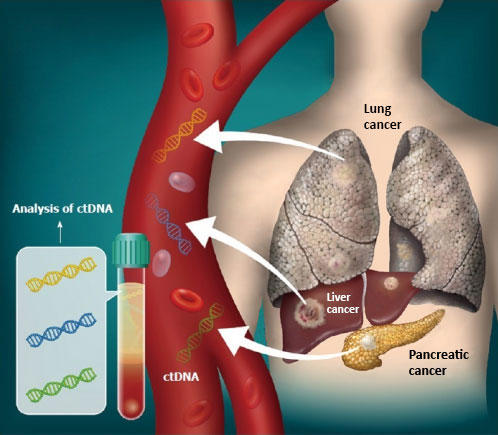
The FIMAP Lab's smart knee brace. 2025 EPFL/Hugo Masson CC BY SA
EPFL researchers have engineered a fiber-based electronic sensor that remains functional even when stretched to over 10 times its original length. The device holds promise for smart textiles, physical rehabilitation devices, and soft robotics.
The phrase 'liquid metal' may bring to mind something hazardous, like mercury or molten steel. But in the Laboratory of Photonic Materials and Fiber Devices (FIMAP) in EPFL's School of Engineering, it simply means a mixture of indium and gallium that is nontoxic, remains liquid at room temperature, and shows great promise for developing electronic fibers for wearables and robotic sensors.
Unfortunately, as FIMAP head Fabien Sorin explains, liquid metals are extremely difficult to process, and it's especially hard to produce electronic fibers that combine high and stable conductivity with stretchability. Now, the lab has overcome this challenge using a technique called thermal drawing, which is traditionally used to engineer fiber optics.
"We have integrated thermal drawing into a greatly simplified process for producing fiber sensors with finely tailored electronic properties, making them promising candidates for smart textiles for sport and health monitoring applications," Sorin says.
The team used their technique, recently published in Nature Electronics, to build a smart knee brace that can monitor a user's movements and joint function during activity.
Simple, sensitive, stretchable
The thermal drawing process starts with creating a macroscopic version of the electronic fiber called a preform, which contains liquid metal components carefully arranged in a 3D pattern. The preform is then heated and stretched out, like melted plastic, to make fibers of a few hundred microns to millimeters in diameter that retain the same 3D pattern.

PhD student and first author Stella Laperrousaz explains that this pattern is one of the keys to the team's innovation, because it allows them to control which areas of an individual fiber are active (electrically conductive) or inactive (insulating).
"When the liquid metal is mixed with a soft elastomer matrix, it forms many small droplets. The process of heating and stretching the preform breaks these droplets and activates the liquid metal. This means that we can finely tune the functionality of a single fiber by controlling which areas become active through the shear stress caused by the preform stretching process."
Experiments showed that the team's fibers remained highly sensitive even when stretched to over 10 times their original length, giving the technique a significant advantage over other methods that struggle to balance electrical performance with stretchability and ease of processing.
A smart knee brace
As a proof-of-concept, the researchers seamlessly integrated their electronic fibers into a soft knee brace and then recorded the device's performance while a subject walked, ran, squatted, and jumped. The brace reliably monitored the bending angle of the wearer's knee and was even able to accurately reconstruct their gait during running.
"Thanks to its ease of integration, our fiber could easily be used to monitor motion and detect anomalies in other joints, such as the ankles, shoulder or wrist," Sorin says, adding that the technique is also potentially highly scalable.
"Conventional electronic devices can be too fragile or too rigid to be integrated into textiles, but our fiber could be integrated into meters - or even kilometers - of fabric with sufficient scale-up, which is what we are working on next. Such fabric could then be used to produce wearables, soft prostheses, or sensors for robotic limbs."






